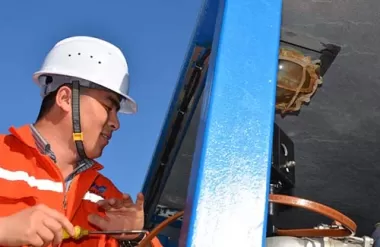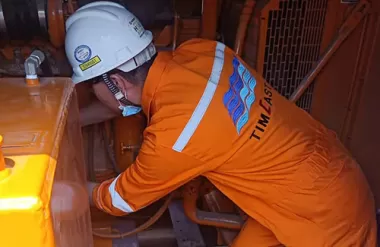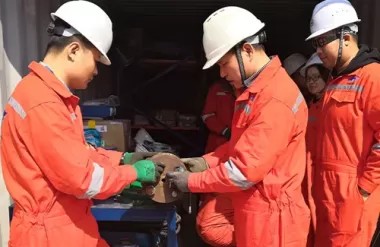Sep. 07, 2023
Pipeline cleaning services play a crucial role in maintaining the integrity and efficiency of pipelines in various industries, including oil and gas, water treatment, and manufacturing. These services are essential for preventing corrosion, blockages, and contamination within pipelines. In this article, we will explore how pipeline cleaning services work and the methods employed in the process.
Before delving into the specifics of how pipeline cleaning services work, it's important to recognize why they are essential. Over time, pipelines can accumulate various forms of debris, contaminants, and deposits. These buildups can lead to several problems, including:
Reduced Flow Efficiency: Deposits inside the pipeline can constrict the flow of liquids or gases, reducing the overall efficiency of the system.
Corrosion: Corrosive substances and bacteria can accumulate on the inner surface of pipelines, causing structural damage and reducing the pipeline's lifespan.
Blockages: Particles, sediment, or foreign objects can block pipelines, leading to costly shutdowns and repairs.
Contamination: In industries like food processing or pharmaceuticals, pipeline cleanliness is critical to prevent contamination of products.
Pipeline cleaning services employ various methods and technologies to effectively clean and maintain pipelines. Here are some common techniques:
1. Mechanical Pigging:Pigging Devices: Mechanical pigs are cylindrical devices that travel through the pipeline, scraping and removing deposits along the way. They can be equipped with brushes, scrapers, or magnets to address specific types of buildup. Batch or Gel Pigs: These are often used in the oil and gas industry to clean and inspect pipelines. Batch pigs can be loaded with cleaning agents or inhibitors.
2. Hydroblasting:High-Pressure Water Jets: Hydroblasting involves the use of high-pressure water jets to dislodge and remove deposits and contaminants from the pipeline's inner surface. The water pressure can be adjusted based on the pipeline material and the nature of the deposits.
3. Chemical Cleaning:Solvent or Cleaning Agents: Chemical cleaning may involve the use of solvents or specialized cleaning agents to dissolve and remove deposits. This method is particularly useful for cleaning pipelines in the chemical and pharmaceutical industries.
4. In-Line Inspection (ILI):Intelligent Pigs: In addition to cleaning, intelligent pigs equipped with sensors and cameras can inspect the interior of pipelines. They can identify structural issues, corrosion, and other anomalies.
5. Ultrasonic Cleaning:Ultrasonic Waves: Ultrasonic cleaning uses high-frequency sound waves to create microscopic bubbles in the cleaning solution. These bubbles implode, generating powerful cleaning action to remove contaminants.
The process of pipeline cleaning services typically follows these steps:
Assessment: The service provider assesses the condition of the pipeline, identifies the type of buildup, and determines the most suitable cleaning method. Preparation: Depending on the chosen method, the pipeline may need to be isolated, drained, and depressurized to ensure safety during cleaning.
Cleaning: The selected cleaning method is executed, whether it involves mechanical pigging, hydroblasting, chemical cleaning, or a combination of methods.
Inspection (Optional): In some cases, an in-line inspection may be conducted to assess the pipeline's condition and identify any issues that require repair or maintenance.
Testing: After cleaning, the pipeline may be tested to ensure that it meets desired flow rates and quality standards.
Documentation: A detailed report is generated, documenting the cleaning process, any findings during inspection, and recommendations for further maintenance or repairs. Maintenance Planning: Based on the assessment and inspection results, a maintenance plan may be developed to prevent future buildup and ensure the long-term integrity of the pipeline.
In conclusion, pipeline cleaning services are essential for maintaining the functionality and longevity of pipelines across various industries. These services employ a range of methods and technologies to remove deposits, contaminants, and blockages, ultimately ensuring the safe and efficient operation of pipelines. Regular cleaning and maintenance are critical to prevent costly repairs and downtime.
Dec. 12, 2023
The Basics of Electric Heat Trace Technology In the world of industrial processes and temperature control, Electric Heat Trace (EHT) technology plays a crucial role.Nov. 23, 2023
Performing a Leak Test: Step-by-Step Guide A leak test is a crucial procedure to ensure the integrity of a system and identify potential leaks in pipes, joints, or containers.Nov. 08, 2023
Main Steps of a Flange Management Procedure Flange management is a critical aspect of maintaining the integrity and reliability of piping systems in various industries.

